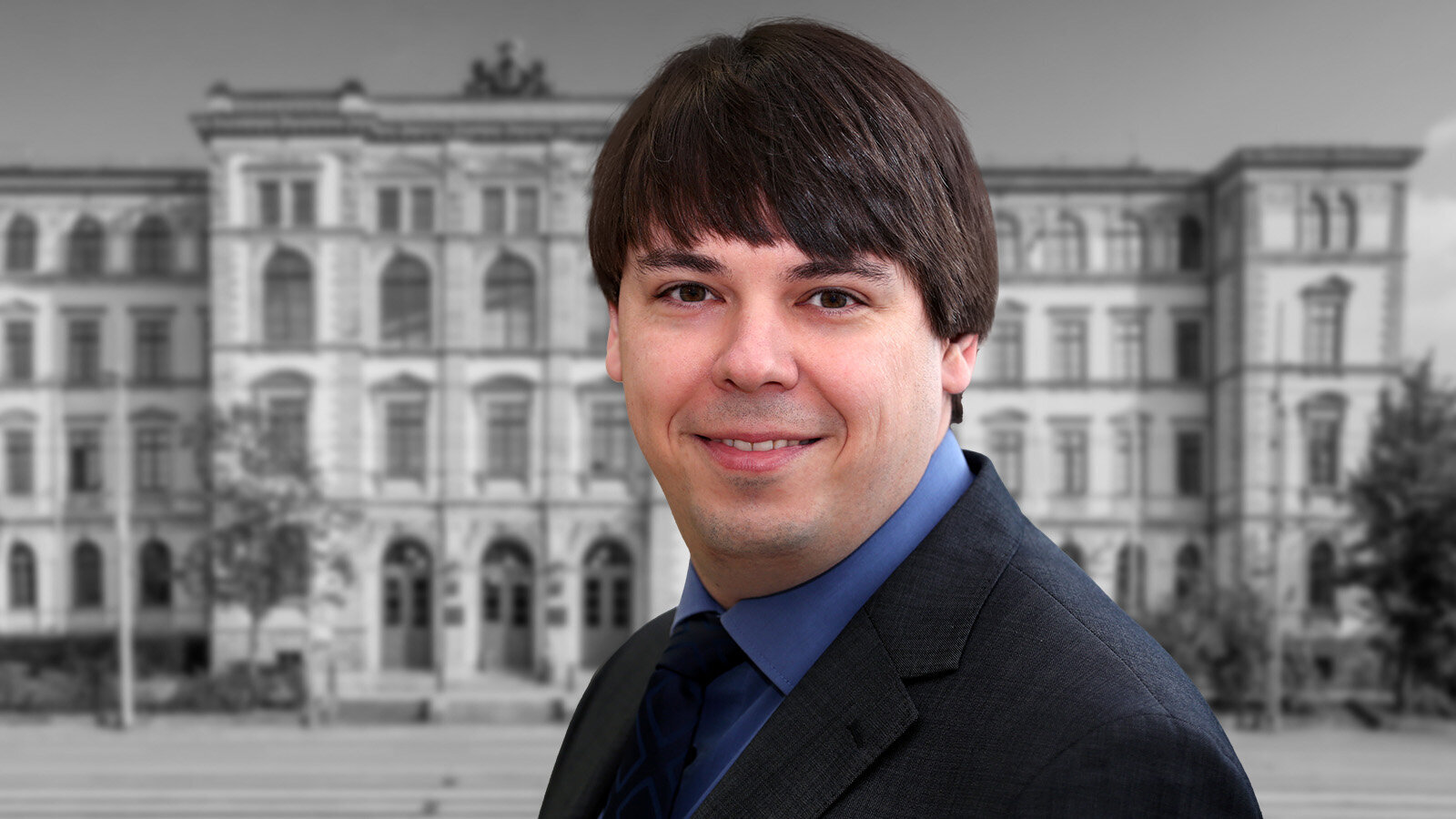"These findings can be used, among other things, for the targeted use of drugs in the body"
This year's Nobel Prize in Chemistry was awarded for the groundbreaking development of "click chemistry" - Chemist Prof. Dr. Martin Breugst from Chemnitz University of Technology explains its significance in an interview
-

Prof. Dr. Martin Breugst is the head of the first Heisenberg Professorship at Chemnitz University of Technology. Photo/Collage: private (Martin Breugst)/Jacob Müller
On October 5, 2022, chemist Carolyn R. Bertozzi of Stanford University and chemists Morten Meldal of the University of Copenhagen and Barry Sharpless of the Scripps Research Institute received this year's Nobel Prize in Chemistry. The researchers received the award for their groundbreaking method for building molecules - and thus also for the development of a new chemistry. So-called „click chemistry“ allows aspects that previously were only possible in a very complex process - assembling molecules in a targeted manner. In an interview, Prof. Dr. Martin Breugst, head of the Professorship of Theoretical Organic Chemistry and the first Heisenberg Professorship at Chemnitz University of Technology, explains the significance of this development against the background of the Nobel Prize.
Professor Breugst, your colleagues Carolyn R. Bertozzi, Morten Meldal and Barry Sharpless recently received the Nobel Prize in Chemistry. For which findings exactly were they honored with this most important scientific award?
This year, the concept of click chemistry was awarded the Nobel Prize in Chemistry. Many chemical compounds are still frequently produced in very complex and expensive processes. In the early 2000s, Morten Meldal and Barry Sharpless developed the concept of click chemistry in parallel, with which these compounds can be easily assembled like LEGO building blocks. The developed reactions are broadly and modularly applicable and highly efficient. Carolyn Bertozzi now had the idea of using this concept to study biomolecules in living organisms. Since click reactions must run alongside the normal metabolic processes of organisms, these reactions are also referred to as bioorthogonal.
Why is this method so important?
Many chemical reactions have the disadvantage that very high temperatures, i.e. a lot of energy, are often required and that other by-products can be formed in addition to the desired products. With click chemistry, these disadvantages can now be largely avoided and the same products can be produced very precisely and with little effort. In one of the most important click reactions, triazoles, for example, which are important structural motifs in many drugs and pesticides, can be synthesized even in water and at room temperature from an organic azide, an alkyne, and a simple copper catalyst. Before the development of this process, this would only have been possible at great expense.
A groundbreaking application of click chemistry is the bioorthogonal reactions already mentioned. These take place inside cells - and in such a way that other cell processes are not disturbed or influenced. Typically, a click reaction is used to bind a dye to a biomolecule, for example a carbohydrate. Using a microscope, the dye - and thus also the location of the biomolecule - can then be easily determined within the cell. It is now even possible to record the movements of a molecule as a video and thus obtain important information, for example about metabolic processes. These findings can be used, among other things, for the targeted use of drugs in the body.
In which areas are these findings already being used today?
Although the concept is only about 20 years old, it is already being used very successfully in various areas. Many drugs, polymers, and materials are already produced using this technique, and click chemistry is also routinely used in the field of DNA sequencing. Bioorthogonal responses have also contributed to a better understanding of disease, as this technique makes it possible to study the migration and distribution of biomolecules directly in living cells.
You said that the findings have been known for about 20 years. When did you first come into contact with click chemistry?
Since click chemistry is based on the work of a Munich professor, Rolf Huisgen, I came into contact with this concept early on during my studies at LMU Munich. Even after graduation, this topic did not leave me completely: At that time, another research group at LMU was working on the mechanism of the copper-catalyzed click reaction, and during my post-doctoral period at the University of California in Los Angeles, bioorthogonal reactions as used by Carolyn Bertozzi were an important research topic of my host Ken Houk.
Do the findings also play a role in your current research at the Institute of Chemistry at Chemnitz University of Technology?
In my research group, we also like to use click chemistry because we can produce different iodinated compounds extremely efficiently in this way. For one thing, we would like to use these structures as catalysts under very mild conditions. Second, we are interested in the specific interactions of these structures and the question of whether they can also be used in materials, for example. In the past, we have also modeled very similar reactions on the computer to better understand how they occur.
(Translation: Brent Benofsky)
Matthias Fejes
11.10.2022




